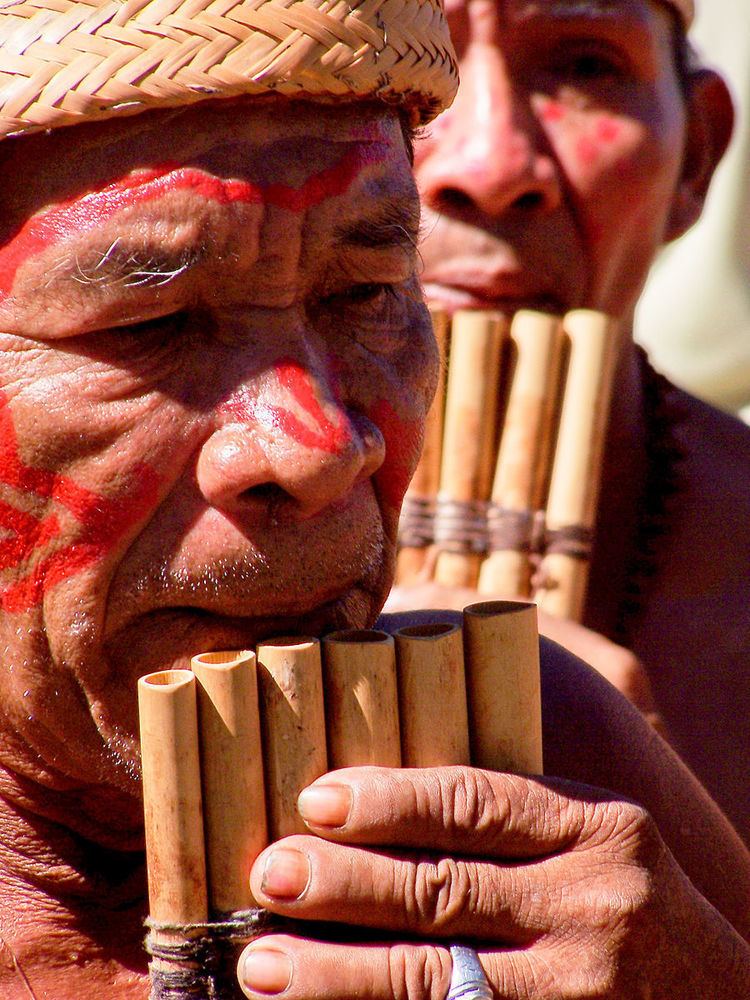 | ||
Venezuela 8,428 (2001 census)SIL, "Guahibo", Ethnologue. | ||
The Guahibo people (also called Guajibo, or Sikuani, though the latter is regarded as derogatory) people are an indigenous people native to Llanos or savannah plains in eastern Colombia–Arauca, Meta, Guainia, and Vichada departments–and in southern Venezuela near the Colombian border. Their population was estimated at 23,772 people in 1998.
Contents
Municipalities belonging to Guahibo territory
The Guahibo inhabited the Llanos of Arauca.
History
An 1856 watercolor by Manuel María Paz is an early depiction of the Guahibo people in Casanare Province.
Language
Guahibo (ISO 639: GUH) is related to the Arawakan language family of South America and is divided between the dialects of the Wüinpumuin (northeast region) and Wopumuin (southwest region) although the groups understand each other. The existing dialects are: Guahibo (Sikuani), Amorua (Río Tomo Guahibo) and Tigrero. They each have their own languages but many are lost, now replaced by Spanish. Despite 55% illiteracy, there is a written form of Guahibo. There is a Guahibo newspaper, dictionary and grammar book.
